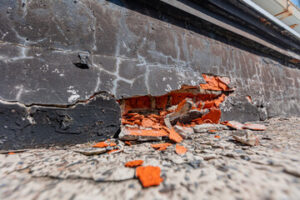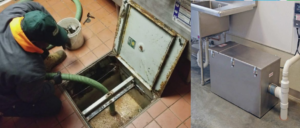Foundation Inspections Plano are a proactive measure to prevent structural damage and costly repairs. In this article, we will cover when to get a foundation inspection, the process and what you can expect from a reputable company.

Qualified structural engineers look for signs of underlying issues. Uneven floors, cracks in walls and doors/windows that no longer close properly are indicators of structural instability.
Foundation inspections are crucial to ensure the structural integrity of a home. When performed by a professional engineering firm, they are used to identify and address any issues that might threaten the safety, stability and value of a home. Whether you are building a new house or selling one, regular foundation inspections are recommended to maintain the condition of the substructure and prevent future damage and expensive repairs.
The inspection process usually starts on the exterior, where specialists look for any signs of leaning or bulging that may indicate a shift in the foundation. They also search for cracks that are wider than 1/8 inch, those that extend around concrete corners or display a stair-step pattern on block walls. In addition, they check for any water stains or efflorescence, which is a white, powdery substance caused by the leeching of water-soluble salts, cement elements and critical lime and pozzolans from concrete surfaces.
Engineers then move to the interior of a home, where they look for cracks and separation on walls that may indicate a shifting foundation. They also look for any bowed or inward leaning of wall sections, which could indicate a serious problem that requires immediate evaluation. They will check the floors and ceilings for buckling or warping, as well as simple tests like seeing how easily balls roll on the floor to evaluate the levelness of the structure.
Inspectors will also look at the home’s drainage system and any landscaping to make sure that water is not getting pooled against the foundation. If it is, engineers will recommend ways to fix the problem, which could include installing a drainage system or re-grading the landscaping away from the house to minimize water damage.
Once the foundation inspection is complete, the engineer puts together a detailed report that includes professional recommendations on how to resolve any identified issues. The report is then sent to the construction manager, who reviews it to determine what needs to happen next. If the report is positive, construction can proceed as planned. However, if there are significant problems that need to be addressed, the construction manager will work with the engineer to decide on a plan of action that best protects the home and ensures a safe and stable structure.
Inspection
A foundation inspection involves looking at the exterior and interior of the home, checking walls, looking for cracks, and assessing whether there are any signs of a sinking or leaning foundation. A quality inspector will also take the time to examine the soil conditions around the foundation. This helps to identify issues like expansive soils and poor drainage, which can lead to foundation damage over time.
Once the inspection is completed, the professionals will write up a report detailing their findings and recommending what should be done to fix any problems. Construction managers will read over this report to make sure it’s accurate and to determine how serious the problem is.
If a homeowner notices that signs of foundation movement are getting worse, they should call in an inspection right away. This will prevent the issue from deteriorating further, which can lead to major structural failure and even legal troubles in extreme cases.
A reputable foundation repair company will offer tailored solutions based on their findings, so they can provide customers with the best possible outcome. This will include short-term solutions to repair any immediate problems and long-term maintenance recommendations to prevent future foundation issues.
Foundation repairs often involve removing and replacing damaged sections of the foundation. These may include the footings, slab, or basement, as well as installing support beams or columns. Professionals will make sure to install the correct materials to ensure that the new section of the foundation is stable and durable.
Bowed walls, wide cracks, and gaps between the floors and walls are all indicators that the foundation needs attention. A reputable foundation repair company will provide the customer with options for fixing these problems, including repairing the existing cracks and using a concrete lift to raise or lower the foundation, depending on the situation.
In addition to repairing the existing problems, foundation experts will also make suggestions for how to prevent future problems from occurring, such as by implementing a rainwater collection system and sloping the outside landscaping away from the house. By following these simple tips, homeowners can protect their investment in their home and avoid costly future repairs.
Report
As the inspection process comes to a close, the engineer outlines the findings in a comprehensive report that includes observations, interview information, conclusions and recommendations. This report serves as valuable documentation that guides future maintenance decisions and investment planning. It is also helpful for homeowners and property owners who may want to sell their property in the future, as it provides transparency when it comes to potential foundation issues.
During the inspection, the inspector will evaluate the condition of the building’s foundation. If the structure has a concrete slab foundation, the engineer will note any cracks and check for signs of settlement. For houses with a poured, block, or cinderella foundation, the engineer will observe the outside perimeter and look for brick veneer damage, fascia board conditions, eaves, and any water penetration problems. For houses with a pier and beam or crawl space foundation, the engineer will physically enter the crawl space and note any moisture issues as well as joists, piers, and beams. The engineer will also examine the internal temperature and humidity, as these conditions are indicative of the health of the foundation.
After evaluating the structural integrity of the structure, the engineer will make recommendations based on their findings. These recommendations can include repair solutions, permit information, or if the structure needs to be further evaluated by a structural engineer.
A foundation inspection is a worthwhile investment for any homeowner or building owner. It can help identify and prevent serious structural problems that can be costly to repair. A home or commercial building with a solid foundation is a safe and secure environment for its occupants, as well as a valuable investment in the local real estate market.
If the inspection results in a recommendation for repairs, the engineer will provide estimates and a timeline for completing the work. Then, the homeowner or property owner can decide whether to proceed with the repairs or seek a different solution. The inspector can also recommend additional evaluations by specialist engineers to address complex structural problems. These additional evaluations can help ensure that the best possible solution is chosen and executed.
Recommendations
The foundation inspection process provides a wealth of information about the building’s structural health. It helps you plan for future repairs and guide maintenance efforts. This information can also help you make better decisions about buying or selling a property. A home with serious foundation problems will likely not sell well and could end up costing you a lot of money in the long run. It’s best to have the problem identified and addressed by a professional before it gets worse.
During the inspection, an engineer will note any issues that need to be addressed. He will then make recommendations for repairs and long-term maintenance to keep your building in good condition. These recommendations may include repairs, soil stabilization techniques, or other solutions.
It’s important to find a qualified engineer with experience in foundation inspections. Search online reviews and ask friends, family members, or real estate agents for referrals to find an inspector with a proven track record. The engineer should be licensed and insured in your state and should have a wide range of skills to perform various inspection types.
A typical foundation inspection will start with a visual examination. The engineer will look for water stains, cracks, and other signs of damage. He will also assess the type of soil around the structure. Different types of soil have different moisture levels and can affect the stability of a foundation. Clay soil, for example, tends to expand when it’s wet and can cause shifting of the foundation.
Other areas that need to be examined include stair-step cracks in walls and ceilings, and uneven floors. These signs indicate that the building is shifting, which can lead to major damage over time if not corrected.
Once the inspection is complete, the engineer will write a detailed report detailing any issues that need to be addressed and their severity. This report will also provide recommended solutions, including permit information and a list of contractors to contact for repairs. The report will also recommend any preventative measures that should be taken to protect your building in the future.
